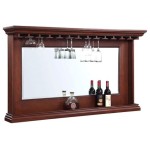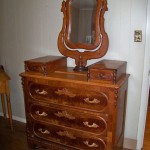How To Mirror Screen HDMI Windows 10
Mirroring a Windows 10 screen to an HDMI-connected display expands the user's workspace, facilitates presentations, and enhances entertainment experiences. Several methods achieve this, each with its own advantages and limitations. This article explores the various techniques and provides step-by-step instructions to help users successfully mirror their Windows 10 screens via HDMI.
Using the Project Feature (Windows Key + P)
The simplest method for mirroring involves the "Project" feature, readily accessible through the Windows Key + P shortcut. This feature offers four display modes:
- PC screen only: Output is restricted to the primary display.
- Duplicate: The same content is shown on both the primary display and the connected HDMI display.
- Extend: The connected HDMI display acts as an extension of the desktop, creating a larger workspace.
- Second screen only: Output is directed solely to the HDMI-connected display, turning off the primary display.
To mirror the screen, select "Duplicate" after pressing Windows Key + P. This immediately replicates the primary display's content on the HDMI-connected display.
Adjusting Display Settings
Windows 10's display settings provide further customization options. Accessing these settings allows the user to configure resolution, orientation, and scaling for each display. Incorrect configurations can lead to blurry images or improperly fitted content.
- Right-click on the desktop and select "Display settings."
- Identify and select the correct displays (usually numbered 1 and 2).
- Choose the desired resolution for each display. It is recommended to use the native resolution for optimal clarity.
- Adjust the orientation (landscape or portrait) as needed.
- Modify the scaling settings to ensure text and icons are displayed at a comfortable size.
- Under "Multiple displays," select "Duplicate these displays" to mirror the screen.
Troubleshooting Connection Issues
Occasionally, the HDMI connection might not be recognized automatically. This could be due to a faulty cable, incorrect port selection, or outdated drivers.
- Verify the HDMI cable is securely connected to both the computer and the display.
- Try a different HDMI port on both devices.
- Restart the computer and the display.
- Update the graphics drivers. This can typically be done through the Device Manager or the manufacturer's website.
- Check the display's input source to ensure it's set to HDMI.
Utilizing the Action Center (Windows Key + A)
The Action Center provides another avenue for quickly connecting to wireless displays. While not directly related to HDMI mirroring, it's a worthwhile alternative for compatible devices.
- Open the Action Center using Windows Key + A.
- Click on "Connect."
- Select the target wireless display from the available devices.
Note that this method requires both the computer and the display to support Miracast or similar wireless display technologies.
Advanced Display Adapters
Users with dedicated graphics cards often have access to more advanced display management software provided by the manufacturer (e.g., NVIDIA Control Panel, AMD Radeon Software). These tools offer granular control over display settings, including custom resolutions, refresh rates, and color profiles.
- Access the graphics card control panel (usually by right-clicking on the desktop).
- Navigate to the display settings section.
- Configure the mirroring options according to the manufacturer's instructions. This may involve selecting "Clone" or "Duplicate" mode.
Presentation Mode
Windows 10 includes a built-in Presentation Mode, useful for controlling display settings during presentations. This feature prevents notifications from appearing and optimizes the display for projected content.
- Press Windows Key + P.
- Select "Second screen only" to project only to the HDMI-connected display.
- Alternatively, configure "Duplicate" mode before the presentation and use the Presentation Mode shortcut (Windows Key + Shift + P) to manage settings during the presentation.
Compatibility Considerations
While HDMI is a widely adopted standard, compatibility issues can sometimes arise. Ensuring both the output device (computer) and the input device (display) support the same HDMI specifications avoids potential issues with resolution and refresh rate.
- Check the HDMI version supported by both devices. Mismatched versions can lead to reduced functionality or no display at all.
- Verify the supported resolutions and refresh rates of both devices and configure the settings accordingly.
- Consider using an HDMI adapter or converter if necessary for compatibility between different HDMI versions or connector types.
How To Display Your Computer Screen On Tv Via Hdmi Sony

4 Best Fixes For Windows 10 Not Detecting Hdmi Tv Monitor

How To Screen Mirror Stream Laptop Pc Tv Wireless No Adapters

How To Cast Your Pc Tv Computer Screen Mirror Windows 10 Smart

How To Screen Mirror Stream Laptop Pc Tv Wireless No Adapters

How To Mirror Your Screen On Windows 13 Steps With Pictures

Windows 10 How To Extend Display Using Hdmi

How To Duplicate Displays Across Monitors

Best Methods How To Duplicate Windows Screen Airdroid

How To Connect And Mirror A Windows Laptop An External Monitor Screen Via Hdmi 2024








